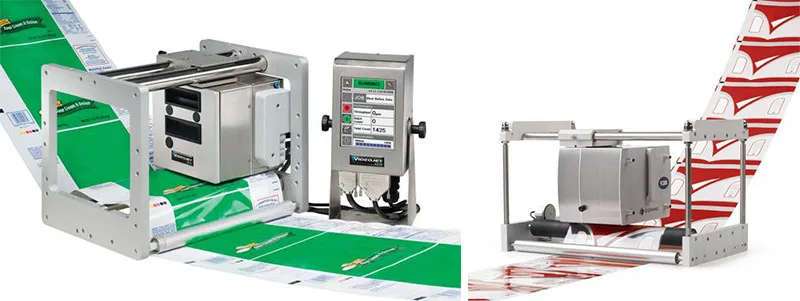In today’s competitive market, eye-catching product packaging plays a crucial role in capturing consumer attention and driving sales. Before your products hit store shelves, choosing the right coding machine is essential to meet both industry standards and market requirements. But with various options available, how do you select the ideal coding solution for your packaging line?

Matching Coding Machine to Packaging Systems
Coding Machine typically works in conjunction with packaging machinery, so your choice should complement your existing or planned packaging setup. Here’s a comprehensive guide to help you make an informed decision:
1. Ribbon Coding Equipment for Vertical Packaging
Best for: FMCG bagged products using intermittent vertical packaging machines
Key Features:
-
Utilizes heated characters to imprint on ribbons before transferring to packaging
-
Offers simple character replacement as needed
-
Requires only ribbon replacement when depleted
-
Provides cost-effective operation with excellent ROI
Advantages: Low maintenance, easy operation, and budget-friendly solution for basic coding needs
2. Thermal Transfer Printers for Promotional Items
Best for: Products requiring variable information like barcodes, promotions, or multilingual text
Key Features:
-
Enables flexible editing of product information and barcodes
-
Accepts USB input for easy content updates
-
Produces crisp, permanent markings that won’t fade
-
Supports multiple language printing
Advantages: Delivers superior flexibility for marketing campaigns and products with changing information requirements
3. Ink Wheel Coders for Pillow Packaging
Best for: Daily necessities and FMCG products with simple date coding needs
Key Features:
-
Prints essential information like production/expiration dates
-
Features straightforward character replacement
-
Uses heated dies for imprinting
-
Requires only ink wheel replacement when depleted
Advantages: Cost-efficient solution perfect for high-volume production of standard consumer goods
4. Laser Coders for Specialty Packaging
Best for: Tin cans, glass bottles, and other smooth surfaces
Key Features:
-
Offers complete content editing freedom
-
Creates permanent, high-quality markings
-
Works without consumables (no ink or ribbons needed)
-
Suitable for various materials including metals and glass
Advantages: Provides superior marking quality for premium packaging with minimal operating costs
Making the Right Choice
Each coding technology serves specific purposes:
-
Basic needs: Ribbon or ink wheel coders offer economical solutions
-
Variable data: Thermal transfer printers provide flexibility
-
Premium packaging: Laser coders deliver high-end results
Understanding your production requirements, packaging materials, and coding complexity will help you select the most appropriate system. Consider factors like:
-
Production volume
-
Required code complexity
-
Packaging material
-
Budget constraints
-
Future scalability needs
Stay tuned for our next installment where we’ll dive deeper into each coding technology’s specific functions and ideal application scenarios. For personalized recommendations tailored to your production line, our team of coding experts is ready to assist you in finding the perfect solution and contact us today.
